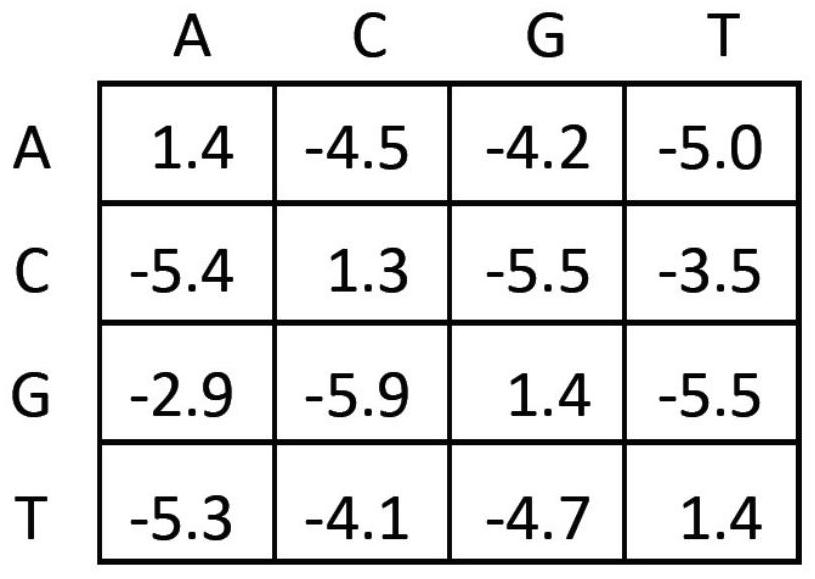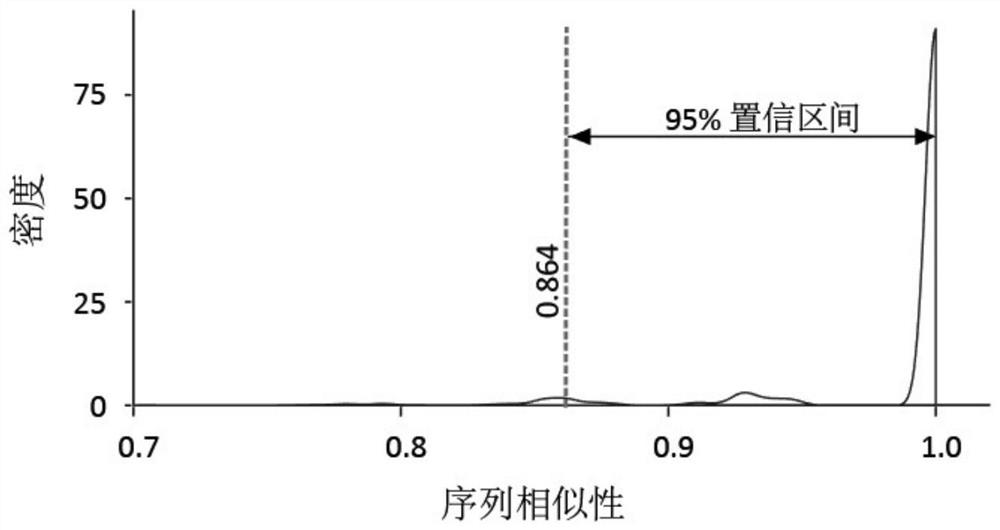Method for correcting and standardizing TCR beta high-throughput sequencing data based on template sequence and reference cell
A template sequence, sequencing data technology, applied in sequence analysis, character and pattern recognition, instrumentation, etc., can solve the problem that the sequencing data is not well resolved, and the estimation of the diversity of the T cell pool is affected.
- Summary
- Abstract
- Description
- Claims
- Application Information
AI Technical Summary
Problems solved by technology
Method used
Image
Examples
Embodiment 1
[0052] Construction and sequencing of TCRβ library of mouse spleen CD3+ T cells.
[0053] 1. RNA extraction
[0054] Sort 1000,000 mouse spleen CD3+ T cells, add 800ul Trizol (TRIzol Reagent, Invitrogen, 15596018), mix by pipetting, let stand for 5 min at room temperature, add 200ul Trizol solution in which 200 2B4 hybridoma cells are dissolved; add 200 ul chloroform, invert and mix for 30 s, place at room temperature for 3 min; centrifuge at 12,000 g for 15 min at 4°C; transfer the upper aqueous phase to another EP tube; add isopropanol at 0.5 ml isopropanol / ml Trizol, invert and mix, and place at room temperature for 10 min ; 4°C, centrifuge at 12000g for 10min; add 75% ethanol according to 1ml 75% ethanol / ml Trizol, shake gently to suspend the precipitate; 4°C, centrifuge at 8000g for 5min, suck off the supernatant; air dry at room temperature for 5-10min; Dissolve in RNase-free water to obtain mouse total RNA, and conduct concentration determination and quality control. ...
Embodiment 2
[0090] Quantitative analysis of TCRβ in mouse spleen CD3+ T cells.
[0091] The number of TCRs measured by evaluating the external reference cells was used as a reference for the number of T cells in the sample; sequencing errors were corrected by the template sequence. Using the assumption that "high frequency sequences are more likely to be the original correct sequences", the stepwise extraction clustering method was used to correct sequencing errors. Use the molecular barcode in the template sequence to separate the template sequence from the sequencing sample, count the number of sequencing reads of different V template sequences, investigate the law of the amplification bias after mixing the sample, and explore the method of correcting the amplification bias to correct Sequencing errors caused by base mutation bias.
[0092] This example is based on mouse spleen CD3+ T cell sequencing data (see Example 1) to study the TCRβ repertoire characteristics of mouse spleen. Th...
PUM
 Login to View More
Login to View More Abstract
Description
Claims
Application Information
 Login to View More
Login to View More - R&D
- Intellectual Property
- Life Sciences
- Materials
- Tech Scout
- Unparalleled Data Quality
- Higher Quality Content
- 60% Fewer Hallucinations
Browse by: Latest US Patents, China's latest patents, Technical Efficacy Thesaurus, Application Domain, Technology Topic, Popular Technical Reports.
© 2025 PatSnap. All rights reserved.Legal|Privacy policy|Modern Slavery Act Transparency Statement|Sitemap|About US| Contact US: help@patsnap.com



